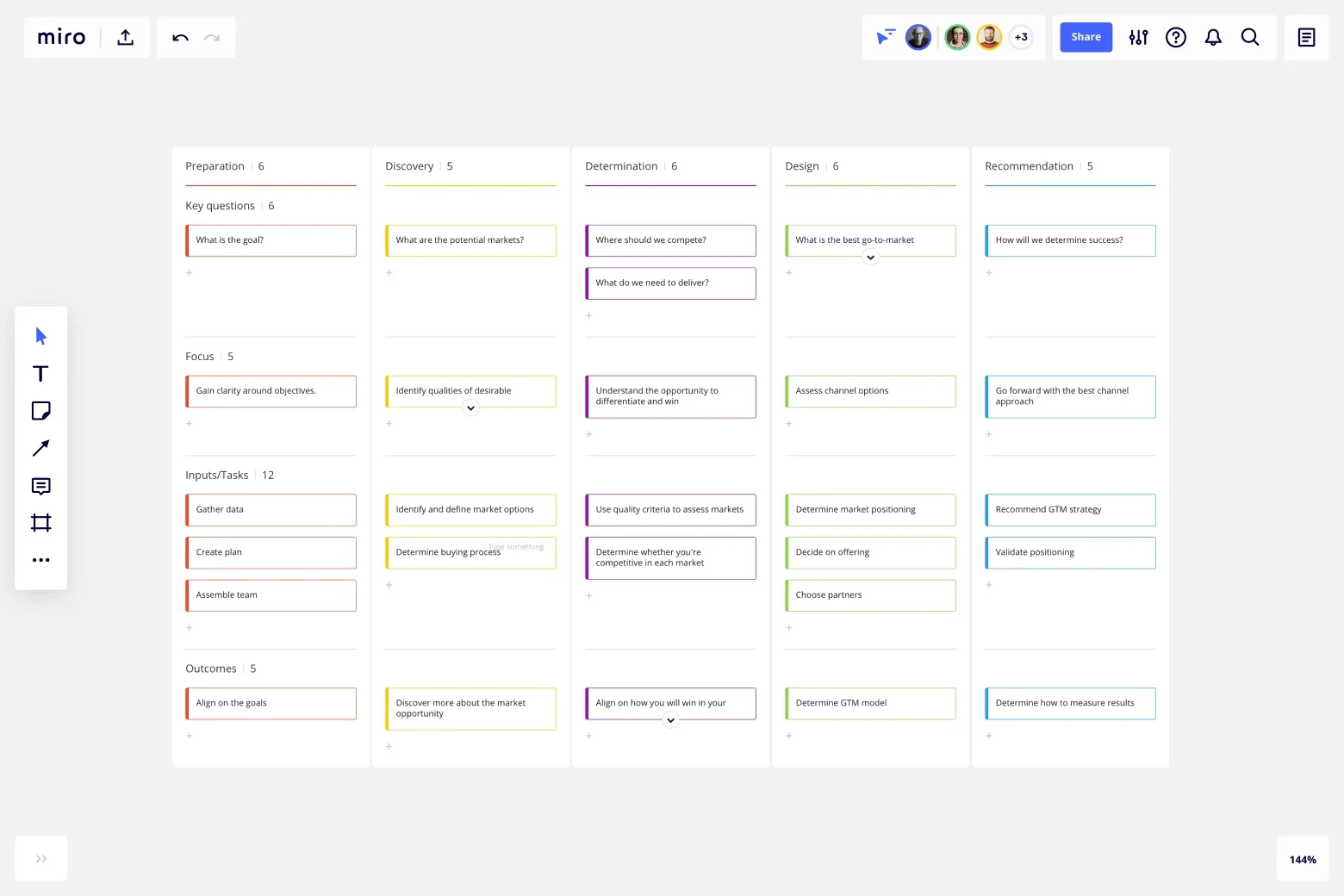
Table of contents
Table of contents
What is a market penetration strategy?

Summary
In this guide, you will learn:
- What a market penetration strategy is: an actionable plan to increase a product or service footprint within an existing or new market using pricing, marketing, sales, and promotional tactics
- Key steps to develop a market penetration strategy, including identifying target markets, analyzing competition, setting goals, defining a unique selling proposition (USP), and establishing pricing and promotion strategies
- How market penetration fits within the Ansoff Matrix as a low-risk growth strategy focused on increasing market share with existing products in existing markets
- Common tactics for market penetration such as competitive pricing, product modifications, digital marketing enhancements, and acquiring competitors
- The benefits of market penetration strategies for growing customer base, increasing sales, and improving customer loyalty in established markets
- Examples of successful market penetration approaches, including Miro’s product-led growth strategy that emphasizes user acquisition and engagement to expand market reach and drive enterprise adoption
Market penetration strategy: A short Intro
Imagine standing at the edge of a vast, undiscovered territory brimming with potential and promising rewards. That's precisely the feeling of penetrating a new market or expanding within an existing one. But, to embark on this journey, you need a well-defined roadmap - a market penetration strategy.
Simply put, a market penetration strategy is an actionable plan a business uses to increase its product or service footprint within an existing market or a new one. The plan typically encompasses pricing tactics, marketing, sales strategies, and various promotional techniques, aiming to grow the customer base.
Understanding market penetration strategies
A market penetration strategy is not a one-size-fits-all solution. Instead, it's a multi-dimensional plan that varies from business to business, depending on factors like the nature of the product or service, competitive landscape, target audience, and available resources.
Effective market penetration strategies often involve competitive pricing, product improvements, increased marketing efforts, or even acquisitions. The choice between these strategies would depend on your business goals and market research.
Advantages of market penetration strategies
A market penetration strategy is not merely an advantage - it's a business necessity. A well-planned strategy offers several benefits:
Market dominance: With a well-executed strategy, businesses can significantly increase their market share, enhancing market dominance.
Economies of scale: As your market share grows, so do your opportunities to benefit from economies of scale. This, in turn, can lead to improved profit margins.
Customer loyalty: Successful market penetration strategies help foster customer loyalty, providing a firm customer base that acts as a bulwark against market fluctuations and competition.
Successful companies that have used market penetration strategies
Every successful company has, at some point, implemented a form of market penetration strategy. Let's look at two iconic examples:
Netflix launched its online streaming service with a strategic focus on a broad content library, competitive pricing, and a user-friendly interface. Their one-month free trial offer was a game-changer, significantly increasing their user base and market share.
Apple used a market penetration strategy to introduce the iPhone. They positioned their product as a premium, user-friendly, and innovative alternative to existing smartphones. Despite the high price point, their strategy led to substantial market share growth, making them a dominant player in the smartphone industry.
Developing a market penetration strategy
There are many ways to develop a market strategy. Here is a quick guide that you can refer to when building your own strategy:
1. Identify your target market Understand your target audience's demographics, behaviors, needs, and pain points.
2. Analyze your competition Identify your competitors, understand their strategies, and find their weaknesses you can capitalize on.
3. Set clear goals Define what you want to achieve, whether it's a specific sales target, a percentage of market share, or a certain number of new customers.
4. Develop your Unique Selling Proposition (USP) Determine what sets your product or service apart from the competition and focus on this in your marketing efforts.
5. Establish pricing and promotion strategies Based on your USP, set a pricing strategy (competitive pricing, penetration pricing, etc.) and develop promotional strategies to boost visibility and attract your target market.
6. Decide on distribution channels Whether it's direct selling, online selling, or selling through intermediaries, choose the most effective and efficient way to get your product or service to your customers. Use the Marketing Funnel Template to help you with this task.
Final act: Putting your strategy into action
After devising a strategy, it's time to implement it:
Create a timeline Set a specific timeline for each step of your strategy.
Allocate resources Ensure you have the necessary resources (human, financial, technological) to carry out your plan.
Communicate your strategy Inform all stakeholders about the plan, roles, and expected outcomes.
Monitor and adjust Regularly check your strategy's progress and make adjustments based on market response and feedback.
Review and learn After implementation, review the strategy, identify what worked and what didn't, and use these insights to improve future strategies.
Remember, a robust market penetration strategy provides a clear path to your business goals. As you navigate the dynamic market landscape, stay flexible, ready to learn, adapt, and adjust as needed.
Author: Miro Team Last update: August 13, 2025